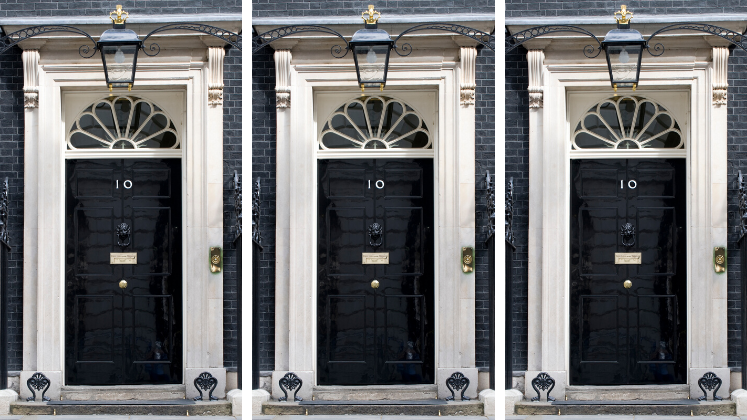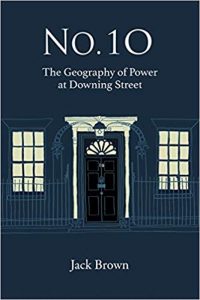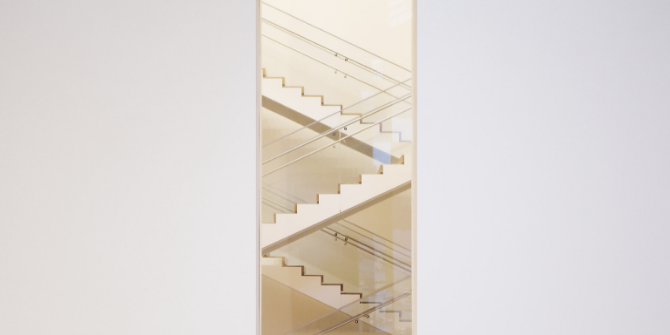Few front doors are as instantly recognisable as that of 10 Downing Street, but can its interior tell us anything worthwhile about politics? In No. 10: The Geography of Power at Downing Street, Jack Brown argues that not only have individual UK Prime Ministers shaped the building during their tenure, but the capacity and shape of No. 10 have also influenced the role of the PM and the machinery around it. Packed with anecdotes and descriptions, this is a novel analysis, writes Artemis Photiadou, that successfully makes the case for incorporating No. 10 into future studies of British politics.
No.10: The Geography of Power at Downing Street. Jack Brown. Haus Publishing. 2019.
Few front doors are as instantly recognisable as that of 10 Downing Street. Behind it lies the British Prime Minister’s office and home. Yet despite the building’s current prominence, little attention has been paid to it – naturally, it is the events that take place there that are of interest rather than the walls. But can Downing Street’s interior actually tell us anything worthwhile about politics?
Jack Brown’s No. 10: The Geography of Power at Downing Street goes some way in emphatically answering this question. The author is clear about what the book is not setting out to do – it does not offer a detailed architectural history of the place nor a thorough account of the role of the Prime Minister. Instead, it aims to combine the two in order to establish the interaction between the building and its occupants. The overarching argument is that individual PMs shaped the building through internal changes during their tenure, but the opposite also holds: the capacity and shape of No.10 have influenced the role of the Prime Minister and the machinery around it.
The book’s chronological remit is narrow compared to the age of 10 Downing Street, which has been used by Prime Ministers since around the Seven Years’ War (1756-63). Instead, Brown focuses on the post-war half of the twentieth century, from Clement Attlee’s 1945 victory to John Major’s 1997 defeat. A good historical overview is nevertheless offered (Chapter One), explaining how George Downing – Oliver Cromwell’s ‘chief spy’ – built the row of houses in the 1680s, a time when the River Thames was much wider and the River Tyburn still flowed, providing a rather ‘marshy ground’ for No.10, causing problems that still affect its occupants today (20). The houses were not intended to serve any political function at the time – the role of the PM did not even exist back then. It was after Downing’s death that the Crown offered the property to Robert Walpole – considered the first PM – in his capacity as First Lord of the Treasury in 1732 (explaining why No.10’s letterbox still has First Lord of the Treasury inscribed on it (21)).
Besides piecing together the history of the building, the book discusses the official work that goes on in 10 Downing Street (Chapter Two), the organisation of key rooms and what that tells us about who has more access to the PM (Chapter Three), as well as the relationship between No.10 and the key buildings that surround it, specifically the Chancellor’s residence, the Palace of Westminster and the Foreign and Commonwealth Office (Chapter Four). The book also looks in detail at the reconstruction of Downing Street in 1960-63 (Chapter Five), the function of No.10 as a home for PMs and their families (Chapter Six), and as a place for hosting key individuals as a way of projecting UK power (Chapter Seven). It concludes with a chapter on the security issues surrounding the building (Chapter Ten).

The book has a number of strengths, one being its focus on No.10 as a home, a function which was established by Arthur Balfour (1902-5) – his Victorian-era predecessors were too aristocratic to live there (151). On this point of No.10 as a family home, Chapter Six is particularly insightful, as it brings together various examples, from a number of sources, to paint an overview of how post-war PMs and their families experienced life in Downing Street. Whereas the Wilsons found the ‘disturbances by officials’ difficult to live with, the Douglas-Homes and the Macmillans enjoyed their tenure, since they ‘were used to living amongst those who worked for them’ (153). And unlike James Callaghan who attempted to avoid moving into No.10 altogether, Attlee enjoyed ‘living above the shop’ (a phrase that Margaret Thatcher used to describe her time in No.10) as it allowed him to spend more time with his family.
The second strength is that the book lays the foundations for a number of future studies, making researchers more aware of the relationship between No.10 as a building and the impact it can have on its occupants. For example, one of the main arguments is that the PM’s support staff has remained deliberately small, despite the PM’s workload having expanded, due to the requirements of the building rather than of the job (38). Political scientists would probably prefer to study the actual functions of No.10 – such as the Policy Unit or the Press Office – before coming to any such conclusions, but Brown’s analysis makes a good case for the realities of the space to be taken into account as well.
A third strength is that the narrative is packed with anecdotes and descriptions that help give a general picture of No.10’s recent past, resulting from the author’s use of archives, memoirs and interviews. In offering a rich description of a building that is otherwise inaccessible to the public, Brown brings together stories that would have otherwise remained unsaid or would have remained scattered across various sources rather than being read together.
While the analysis has some weaknesses, these are mainly due to the nature of the sources available. For example, there is no map of the building’s layout, despite the narrative being all about No.10’s internal configuration. This makes it difficult for readers to visualise what it is they are reading about. Nevertheless, it is not hard to imagine how security concerns may have forced this omission.
The narrative is also incomplete at points and this is again due to the nature of the subject matter. With the book covering a period that saw ten PMs govern Britain, not all discussed their time in Downing Street (as a building) to the same extent; this means that the author had more detail on certain aspects from some of them and none at all from others. In the process of piecing together a common history of No.10’s goings-on, the narrative jumps around between Prime Ministers, rendering a chronological progression sometimes hard to establish. It is also unclear at points what purpose certain details serve, especially when combined with the absence of maps and layouts.
Despite the flaws inherent to the nature of the sources, the book is indispensable to future studies. Not only does it offer a collection of examples and anecdotes that will add depth to any work seeking to discuss the role of British Prime Ministers, but Brown has also instigated a new line of investigation that ought to be taken further, hopefully by encouraging others to start incorporating No.10 more deliberately in studies on British politics. Some obvious future analyses could undertake similar work covering the years not discussed by Brown, comparing No.10’s evolution to that of other British institutions, such as the Palace of Westminster – which shares some of Downing Street’s structural pitfalls – or to premiers’ offices in other parliamentary democracies. Such research will only strengthen what is already a novel analysis, turning an iconic building into a prism through which to study a central aspect of the British constitution.
_________________
Note: The above was first published on LSE Review of Books. Image Credit: Number 10 Door (Number 10 CC BY 2.0)
About the Reviewer
Artemis Photiadou teaches twentieth century politics in the LSE’s International History Department. She is also the Managing Editor of the LSE British Politics blog.


 Find this book:
Find this book: 




